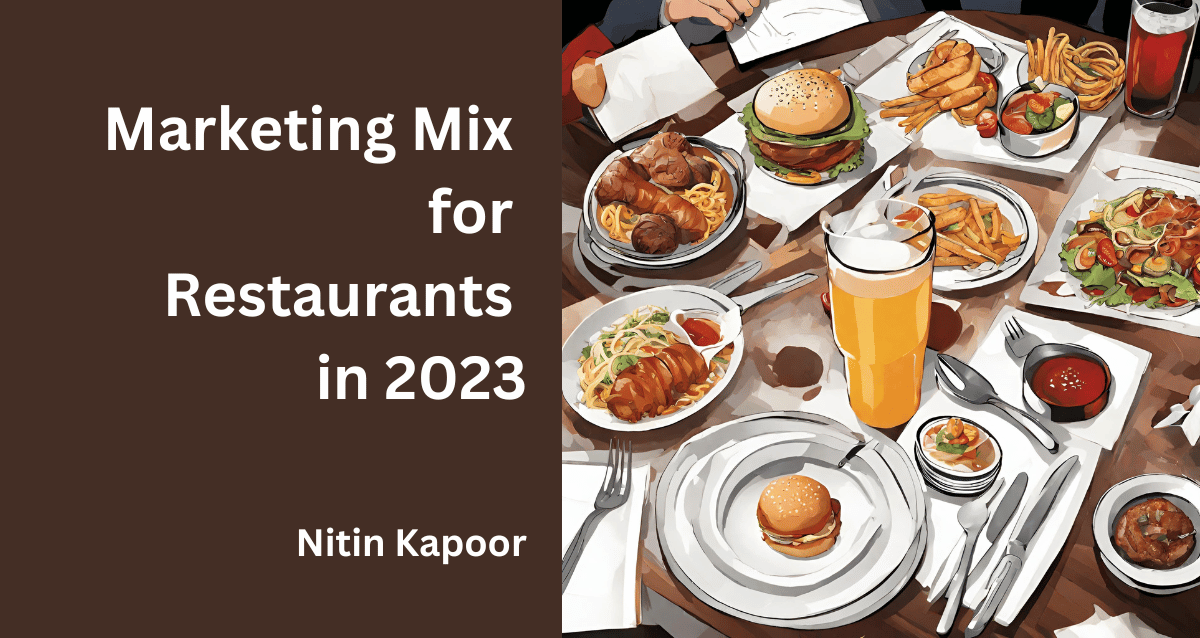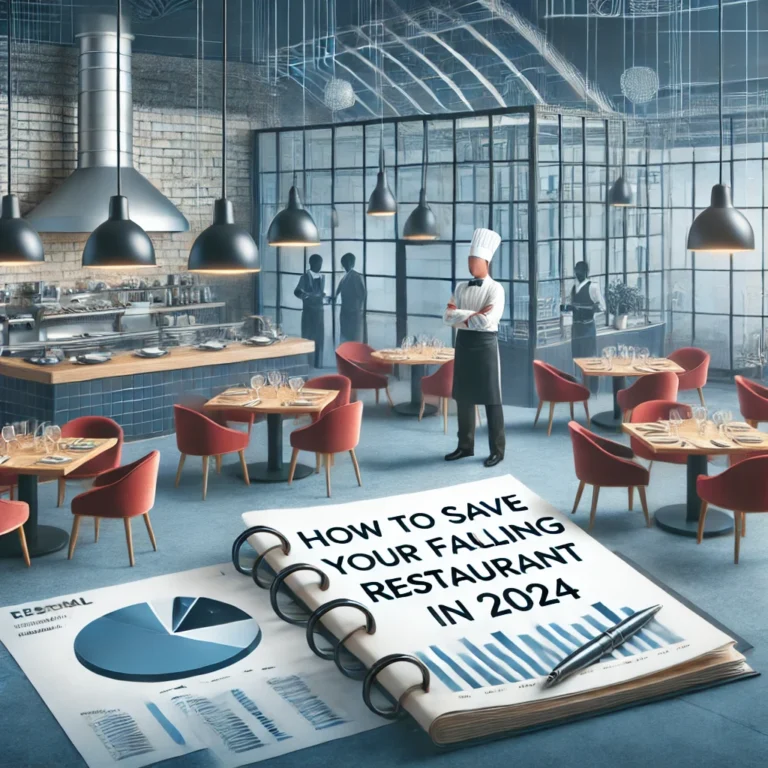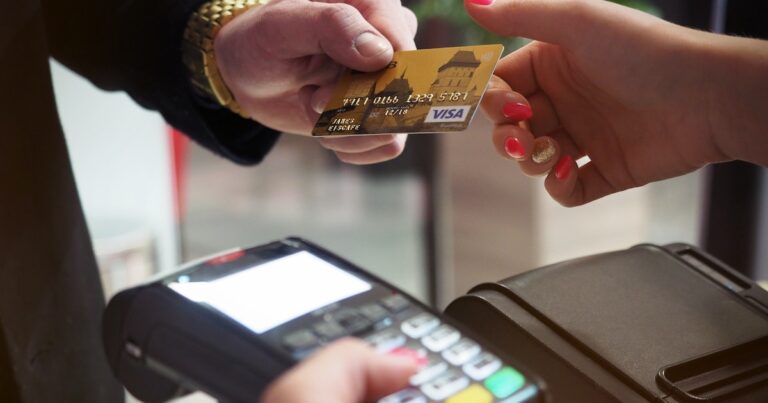Marketing Mix for Restaurant in 2023
Optimizing Your Restaurant’s Marketing Mix for Success
In the ever-evolving world of restaurant marketing, understanding and optimizing your restaurant’s marketing mix is a crucial step toward achieving profitability and staying competitive. As the industry faces fierce competition, both from local eateries and large chains, it’s imperative to continually review and fine-tune your marketing strategy for optimal performance.
Deciphering the Marketing Mix
The marketing mix, often referred to as the 4P’s of Marketing (Product, Price, Place, and Promotion), has been a fundamental concept since it was first introduced by Harvard professors in 1960. When applied to the restaurant and pizzeria business, these principles provide a simple yet effective framework for crafting a marketing plan that aligns with your business goals.
Your restaurant’s marketing mix revolves around four key elements: your menu offerings (Product), menu pricing (Price), your restaurant’s location and competitive positioning (Place), and your deals, specials, and promotions (Promotion).
Crafting the Ideal Marketing Mix
To develop the perfect marketing mix for your restaurant, you must begin by gaining clarity on several critical aspects:
1. Market Segment: Determine the market segments your restaurant caters to, which may include dining, carryout and delivery, and catering.
2. Target Customer: Understand your customers deeply. Consider their age, gender, income, location, and other relevant factors.
3. Competition: Identify your competitors in each market segment. Analyze their menus, pricing, promotions, and online presence to gain insights into your competitive positioning.
Defining Your Marketing Objectives
Setting clear marketing objectives is essential for guiding your efforts and allocating your budget effectively. Some potential marketing objectives for your restaurant might include:
- Generate Awareness: Increase local visibility and brand recognition.
- Increase Repeat Visits: Foster customer loyalty and encourage regular patronage.
- Boost Average Check: Strengthen customer relationships to drive higher spending.
- Competitive Differentiation: Highlight what makes your restaurant unique.
- Build the Brand: Define and communicate your restaurant’s identity.
- Be Top of Mind: Aim to be the first choice for your customers.
- Improve Value Perceptions: Convey the value your business offers.
Clarifying your marketing objectives will help you determine how to allocate your marketing budget effectively, aligning it with your business goals.
Allocating Your Marketing Budget
Just like managing payroll and pricing, your marketing budget should be a well-thought-out portion of your overall business finances. While the exact percentage may vary depending on your specific circumstances, here’s a rough guideline:
- New Location: Allocate 20-30% of forecasted revenues.
- Business Transformation: Dedicate 10-20% of revenues.
- Established Business: Set aside 2-10% of revenues.
A well-planned marketing budget is vital for attracting new customers, increasing cash flow, and ensuring your restaurant’s growth.
Exploring Restaurant Marketing Mix Components
Your restaurant marketing mix can encompass a wide array of channels. Here are 12 marketing channels to consider:
1. Direct Mail Marketing: An established method for reaching local customers, especially effective with specific demographics and when accompanied by special offers and coupons.
2. Call Campaigns: A simple yet effective way to promote your catering services to local businesses, building trust through personal interactions.
3. Billboard Advertising: While traditional, it can still be valuable, especially when combined with online strategies to capture drive-by views and track responses.
4. Search Engine Optimization (SEO): Essential for online visibility, it involves optimizing your website and creating engaging content to convert visitors into customers.
5. Local Search Optimization: Register your restaurant in local directories and maintain up-to-date listings to ensure you’re easily found.
6. Email Marketing: A cost-effective way to engage with customers, provided it’s done right, it can offer a substantial return on investment.
7. Social Media Marketing: With people spending significant time on social media, having a presence here is no longer optional but a necessity.
8. Mobile Marketing: Leverage text messages and mobile apps for direct communication with customers, offering special deals and priority information.
9. Pay-Per-Click (PPC) Ads: Offers precise targeting, retargeting, and detailed tracking for online advertising.
10. Deals Marketing: Platforms like Groupon and Living Social can expose your restaurant to a broader audience.
11. Community Marketing: Engage with your local community through sponsorship, fundraisers, and community events to boost your visibility and reputation.
12. Online Marketplace Hubs: Utilize online hubs like GrubHub and OpenTable to attract new customers, considering the associated commissions and service charges.
Creating Your Ideal Restaurant Marketing Mix
With clear marketing objectives, a well-allocated budget, and selected marketing channels in mind, it’s time to create your marketing mix. Consider:
- ROI: Evaluate the channels that offer the best return on investment, weighing the costs and potential benefits.
- Reach and Engagement: Determine which channels provide the best reach and customer engagement.
- Conversion: Focus on channels that can efficiently convert potential customers into actual patrons.
While there are no guarantees in marketing, using industry data and learning from your competition can guide your decisions. Consider small-scale testing before scaling up to ensure your marketing mix aligns with your objectives and yields the desired results. You can read more such content here






